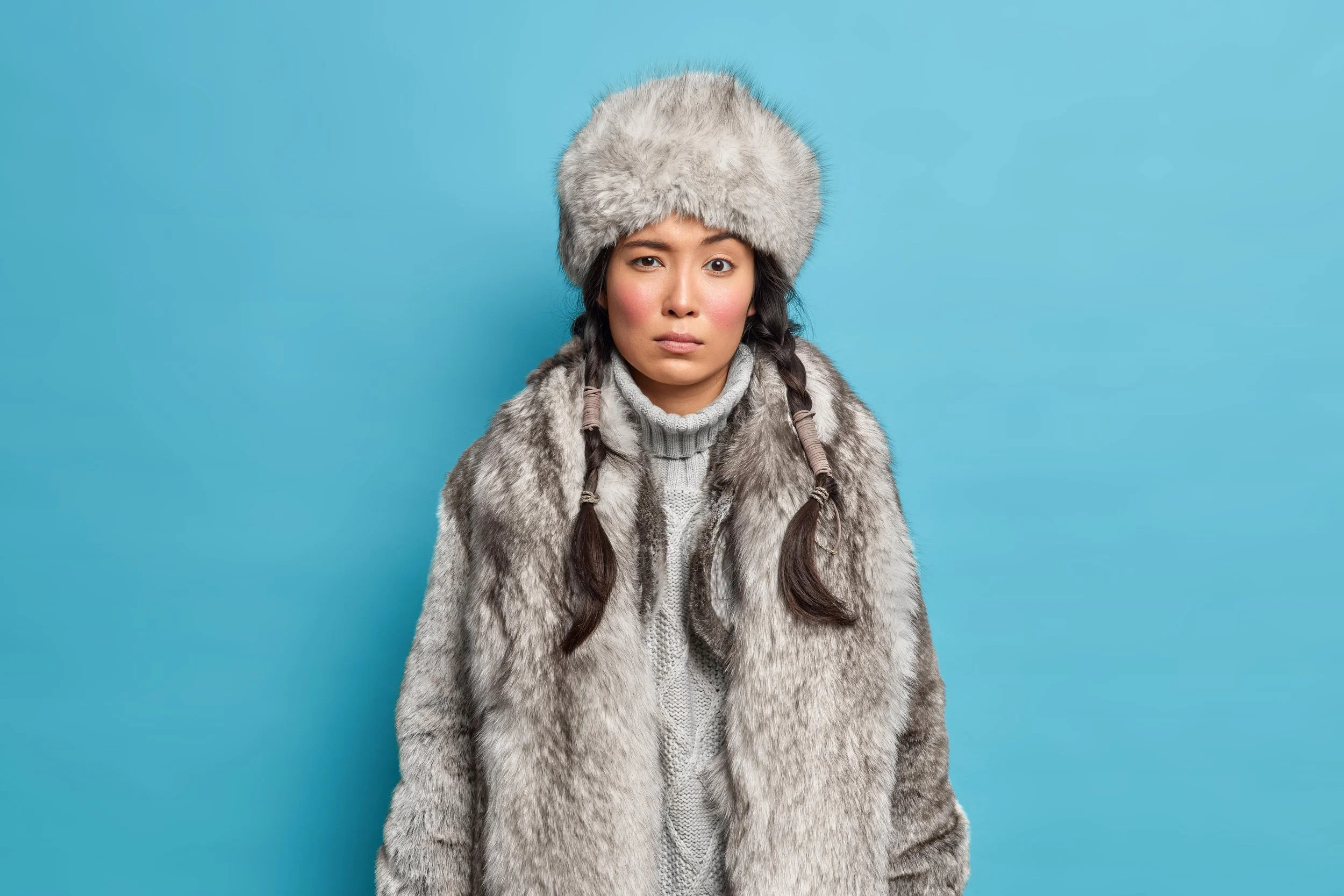Does Ice Rolling Help With Pores, Puffiness, or Acne? A Science-Backed Review
This post contains affiliate links. As an Amazon Associate, I earn from qualifying purchases—at no extra cost to you. I only recommend products I truly believe in.
❄️ Cold, Hard Truths: What’s the Deal with Ice Rolling?
Ice rollers are everywhere—your feed, your fridge, and probably that Pinterest pin that says something like “5 seconds to smaller pores 😍.” But does rubbing a frozen metal tube across your face actually… do anything?
Some people swear by it for morning puffiness. Others claim it calms acne. And let’s not forget the promises to "tighten" pores, smooth skin, and make your face look like it slept for 12 hours and drank a gallon of water.
But here at The Beauty Lab, we don’t freeze our faces without receipts. So today we’re asking:
Does ice rolling really help with puffiness, acne, or pore size—or is it just cold nonsense?
Let’s break down what the research actually says before you stick your jade roller in the freezer (again).
🧊 What Is Ice Rolling, Really?
Ice rolling is exactly what it sounds like: using a chilled tool—usually stainless steel or gel-based—to massage your face. Sometimes it’s an actual “ice roller,” sometimes it’s frozen spoons, jade rollers, or even fancy cryo globes that look like tiny alien dumbbells. Cold is cold, right?
Well, kind of. The basic goal is to expose your skin to cold temperatures to:
Reduce puffiness
Soothe irritation
Temporarily tighten pores
Boost circulation (allegedly)
And in some corners of the internet, cure acne, erase inflammation, and reverse aging
Scientifically, what’s actually happening is vasoconstriction—blood vessels narrow in response to cold, which reduces blood flow and inflammation in the short term. That’s why you use an ice pack on a swollen ankle. Same principle, different body part.
But here’s the thing: just because it feels good doesn’t mean it works for every skin concern. So let’s break down what the research says about puffiness, inflammation, acne, and all those “tighten your pores in 5 seconds” claims.
👁️ Ice Rolling for Puffiness & Inflammation
Let’s start with where ice rolling actually shines: puffiness. You know—the morning “why do I look like I cried in my sleep” face, or that post-salt-binge under-eye situation that no concealer can hide.
Puffiness is usually caused by:
- Fluid retention
- Lymphatic stagnation
- Minor inflammation from allergies, lack of sleep, or skin irritation
And guess what cold therapy does? It tackles every single one of those.
What the Science Says
Cold exposure causes vasoconstriction—your blood vessels temporarily shrink, reducing blood flow to the area. This helps minimize swelling and fluid accumulation, which is exactly why ice packs work for sprains. A 2020 study in the Journal of Cosmetic Dermatology confirmed that cryotherapy can significantly reduce facial puffiness and skin redness in the short term1.
There’s also evidence that cold exposure can stimulate lymphatic drainage, especially when paired with massage techniques2. That’s why some tools are designed to mimic lymphatic drainage massage with a cold twist.
Now, does this mean your ice roller is a miracle wand? Not quite. But it does explain why rolling a cold tool over your face in the morning can visibly reduce puffiness—especially under the eyes.
Pro Tip: It’s Not Just the Cold
The rolling motion itself also helps by encouraging lymphatic flow. That’s why cryo tools that combine cold + massage (like the StackedSkincare Cryo Sculpting Roller) are so effective. They deliver that “awake and less puffy” look in minutes.
🔬 Ice Rolling for Acne & Inflammation
Let’s get one thing straight:
Ice rolling is not a cure for acne.
You're not about to glide your way to clear skin by freezing your breakouts into submission.
But—and it’s a big but—there’s legit science behind how cold affects inflammation. And that’s where things get interesting.
Why It Might Help
Acne is, at its core, an inflammatory condition. Whether you're dealing with whiteheads, hormonal cysts, or that one pimple that ruins your day and your confidence, inflammation drives the redness, swelling, and pain.
And cold? It’s basically nature’s anti-inflammatory.
Cold exposure triggers vasoconstriction (shrinking of blood vessels), which reduces blood flow and calms down the immune response. That’s why your inflamed zit feels less angry after icing.
Studies in dermatology and wound care have shown that cryotherapy can reduce redness, swelling, and discomfort in inflamed tissue (3,4). It won’t kill acne bacteria, but it can visibly calm things down—especially cystic or hormonal breakouts.
But Don’t Toss Your Actives
Here’s what cold won’t do:
❌ Kill acne-causing bacteria
❌ Unclog pores
❌ Balance oil production
❌ Replace your salicylic acid, retinoid, or benzoyl peroxide
It’s a bonus step, not a miracle cure.
And PSA: do not ice roll over broken skin, active irritation, or peeling spots—especially if you're on actives like tretinoin. That’s how people end up with ice burns or popped capillaries.
What Works Well With Ice Rolling?
Keep it simple:
Use a gentle cleanser (like one with salicylic acid or niacinamide)
Roll after cleansing and before applying your actives or moisturizer
Don’t overdo it—2–5 minutes, max
🔍 Ice Rolling for Pores—What’s the Deal?
Ah yes, the “tighten your pores instantly” promise. If you’ve ever watched someone ice roll their face and swear their pores vanished, you’re not alone. But here’s the truth:
You can’t shrink pores.
Not with ice. Not with lemon juice. Not even with a filter that claims it’s #nofilter.
What you can do?
Make them look smaller temporarily. And that’s where ice rolling earns a little street cred.
The Science Behind the Illusion
When you apply cold to the skin, vasoconstriction kicks in (yes, again), which causes blood vessels and surrounding tissues to temporarily contract. This can:
Tighten the skin
Decrease oil flow (briefly)
Slightly reduce redness and puffiness around pores
The result? Your pores appear smaller. But it’s a surface-level effect. Once your skin warms up again, your pores go back to being the size they were all along.
Pore Size vs. Pore Appearance
Cold might give you that freshly-rolled, filtered look—but for real improvement, you need to go deeper:
Salicylic acid unclogs and clears
Niacinamide regulates oil and strengthens skin
Retinoids improve texture and reduce congestion
Clay masks + BHAs can visibly refine appearance over time
Ice rolling might give you a momentary “wow,” but pore care is a long game—and no, a popsicle doesn’t count.
Best Tools to Try (If You’re Sold)
Okay, so you’re not expecting a pore miracle or an acne cure—but you do want to keep an ice roller in your fridge for puffy mornings and calming angry skin. We love that for you.
Here’s what to look for in a good tool:
- Stainless steel or cryo-glass – holds cold longer and glides better
- Gel-filled rollers – great for puffiness and sensitive skin
- Stick-style globes – ideal for under-eyes or targeted spots
- Easy to clean – always important for acne-prone skin
How to Use Ice Rollers (Without Regret)
- Always use on clean skin
- Don’t press too hard—glide, don’t grind
- Limit to 2–5 minutes at a time
- Don’t use on broken, peeling, or sensitized skin
- Clean it after every use (bacteria and chill don’t mix)
No need to store it in the Arctic—the fridge is totally fine.
Top Picks Worth the Chill:
StackedSkincare Cryo Sculpting Roller – This stainless steel roller checks all the boxes: stays cold for longer, glides easily, and is super easy to clean. Great for full-face de-puffing and morning lymphatic boosts.
👉 Check price on AmazonBeautyBio Cryo Dual-Ended Roller – Also stainless steel and dual-sided for full-face or targeted areas. It stays cold, glides like a dream, and makes your routine feel bougie in the best way.
👉 Check price on AmazonSkin Gym Cryocicles – These cryo-glass globes are perfect for under-eyes or targeted areas. Super gentle, great for sensitive skin, and the cold lasts longer than a gel mask in July.
👉 Check price on Amazon✌️ Final Takeaway – Cold, But Not Cured
Ice rolling isn’t total nonsense—but it’s not magic either.
The science is clear: it can temporarily reduce puffiness, calm redness, and make your pores look tighter. For under-eye bags and irritated breakouts? It’s a solid support act. But for treating acne or actually “shrinking” pores? Cold alone won’t cut it.
Think of it like skincare’s version of a cold brew on a Monday morning—refreshing, helpful, and exactly what your face needs sometimes... but not a replacement for the real work.
Pair it with the right actives, don’t overdo it, and enjoy the ritual. It’s skincare and self-care. ❄️
Want to dig deeper?
If you love ice rolling but still battle clogged pores, balance the routine with a good mask. Here’s what science says about when clay masks actually help acne—and when they don’t.
Not all breakouts respond the same way to cooling tools. Learn how to tell cystic, hormonal, and fungal acne apart before you treat.
And if you’re building a routine that goes beyond icing, these affordable serums are proven to calm inflammation without clogging pores.
📚 References
Choi SY, Suh DH. Effectiveness of cryotherapy on facial skin rejuvenation: A clinical trial. J Cosmet Dermatol. 2020;19(6):1386–1391.
Iannitti T, Esposito V, Palmieri B. Clinical efficacy of cold therapy in managing facial edema: A review. Evidence-Based Complementary and Alternative Medicine. 2014;2014:1–10.
Del Rosso JQ. The role of inflammation in acne pathogenesis and treatment: A review. J Clin Aesthet Dermatol. 2017;10(9):20–25.
Kumar S, Sinha S, Mahato SK. Cryotherapy: From wound healing to skin rejuvenation. J Dermatolog Treat. 2021;32(3):292–298.


